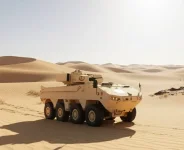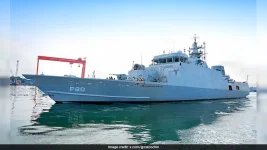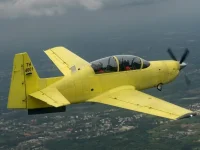The delivery of the first batch of three Tejas Mk1A fighter jets to the Indian Air Force (IAF) is facing significant delays, with initial handovers now potentially postponed until March 2026.
Hindustan Aeronautics Limited (HAL), the aircraft's manufacturer, has cited ongoing challenges with component supply chains and unresolved technical integration issues as the primary reasons for the revised timeline.
his setback highlights the complexities involved in India’s premier indigenous combat aircraft program.
The Tejas Mk1A is a significantly advanced version of the Light Combat Aircraft (LCA), featuring upgraded avionics, including the EL/M-2052 Active Electronically Scanned Array (AESA) radar and a modern electronic warfare suite.
The aircraft is crucial for the IAF, which is trying to replace its aging fighter fleets. The delays are causing concern as the IAF's squadron strength is reportedly below 30, far short of the 42 squadrons authorized to counter potential threats.
The program includes an initial 2021 contract for 83 jets and a more recent approval (September 2025) for 97 additional units.
To speed up production, a third Tejas assembly line was inaugurated at HAL's Nashik facility on October 17 by Defence Minister Rajnath Singh. The first Mk1A prototype built at this site completed its maiden flight the same day.
This new line, repurposed from older MiG and Sukhoi assembly lines, is expected to produce up to 24 aircraft annually once fully operational.
Despite this progress, HAL Chairman and Managing Director D.K. Sunil refrained from providing a specific handover date, stating that while the aircraft is "hardware-ready," the company is focused on "ensuring all systems integrate seamlessly."
This cautious approach comes as the IAF has been pushing to receive the first jets by late 2025 to begin operational familiarization.
A primary bottleneck in the production schedule is the delayed supply of F404-IN20 engines from General Electric (GE) in the United States.
According to a 2021 contract for 99 engines, 30 units were expected to have been delivered by now. However, HAL has reportedly received only four engines to date (with a fifth expected soon) due to global supply chain disruptions and certification hurdles, severely impacting the assembly pace.
This engine shortfall has a direct impact on the assembly lines in both Bengaluru and Nashik, where three completed Tejas Mk1A airframes are reportedly waiting for their powerplants.
Sources indicate that without a steady inflow of engines, HAL’s production lines risk idling, which could lead to cost overruns on the Rs 48,000-crore contract for the first 83 jets.
Compounding the hardware delays are significant software integration challenges.
A critical weapons trial in March 2025, involving the indigenous Astra Mk1 Beyond Visual Range Air-to-Air Missile (BVRAAM), reportedly failed.
The issue was not with the missile or the radar itself, but with the software "handshake" between the missile’s guidance system and the aircraft's AESA radar.
HAL leadership confirmed in September that these software issues required extensive code revisions.
While subsequent retests have shown promise, with the HAL CMD describing the glitch as a "purely a software matter" that has since been "patched," full certification for live-fire operations is still pending.
This delays the validation of the aircraft’s complete weapons capability.
In addition to the Astra, the program is also working to finalize the integration of the British-supplied ASRAAM, a short-range air-to-air missile. This weapon is intended to replace the IAF's legacy R-73 missiles.
While preliminary trials have progressed, final software adjustments are still required for seamless communication between the radar and the missile, with fixes being intertwined with the Astra software patches.
Recent media reports, citing defence ministry sources, support the assessment that the inaugural deliveries will likely slip to early 2026.
The new target of March 2026, which is now seen as the most realistic timeline, comes nearly two years after the Mk1A’s first successful flight in October 2024.
This revised schedule accounts for the time needed to stabilize both the engine supply chain and the complex software systems.
While the delays are a source of concern for the IAF's operational readiness, they also reflect a commitment from HAL to deliver a fully tested and reliable product. Once production achieves momentum, the IAF hopes to induct 11 Mk1A jets by the end of 2026.
The program's success now hinges on GE meeting its revised engine delivery commitments and the successful maturation of the aircraft's advanced weapons systems.
The Tejas Mk1A's journey illustrates the difficult balance between indigenous ambition and the methodical progress required to deliver a world-class fighter jet without compromise.




